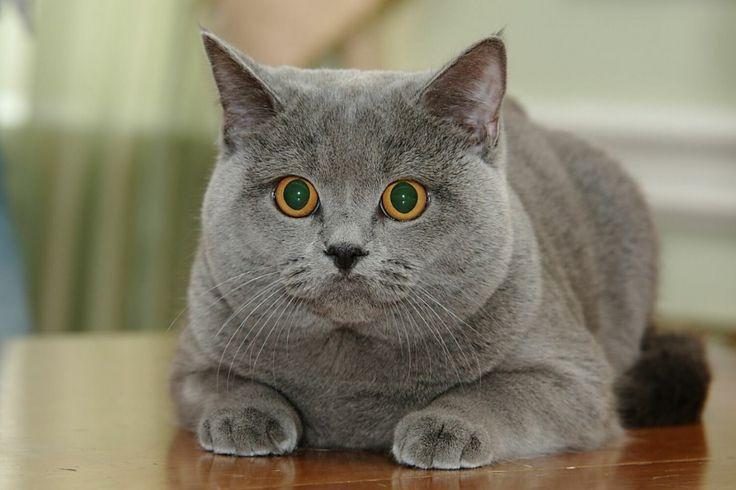So you are a cat person. You are among the many people in the world who actually prefer chill and fluffy cats instead of very active and loyal dogs. This doesn’t mean that you can’t have both, though.
What to know about this particular breed? The British Shorthair is a laid-back cat. She enjoys being touched, but she is not demanding and avoids being carried. She will, however, accompany you from room to room out of excitement. Although British Shorthairs aren’t lap cats, they do like cuddling on the sofa with their owners. Learn more on this link https://www.wikihow.com/Identify-a-British-Shorthair-Cat.
History
So when Romans conquered Britain, they took cats with them to keep rats away from their food sources. The Romans ultimately withdrew, but the cats stayed behind, dominating a kingdom solely based on their allure. The British Shorthair (known simply as the Shorthair in Britain) was among the first types created when pedigreed cat breeding became fashionable in Victorian England. During World War I, breeders produced Persian crosses, which resulted in the Longhair.
Like so many other breeds, British Shorthairs were nearly extinct during World War II due to a lack of food that left breeders incapable of nourishing their cats. The breed was resurrected via crosses with domestic shorthairs, Russian Blues, Persians, and other cats after the war.
Personality
You should know that the British Shorthair personality is one of the best there is. These loving, dignified cats adore attention, are generally calm, yet have spurts of hyperactive activity before returning to their lovable, dignified selves. They get on well with cats and dogs who are cat-friendly.

British Shorthairs are laid-back and easy-going. Males are large, easy-going lugs with a laid-back demeanor yet a natural aura of authority. Females are more serious than males. Both prefer to be near or in the same room as their folks, not necessarily on their laps or being carried around. When their owner is not at home, they’re content to keep themselves occupied until they arrive.
This cat isn’t particularly active. He won’t be found on top of the fridge but rather on the ground. He’s a smart kid who will like playing with toys, particularly if they’re interactive.
The British Shorthair is a clever pet, despite his laid-back demeanor. Teach him tricks and provide him with puzzles that will reward him with food or treats as he discovers how to use them to keep his brain challenged and engaged in life.
Always get a kitten from a breeder that raises litter in their home and cares for them from the start. Check out at least one, preferably both, parents to verify that they have pleasant personalities.
Grooming
The velvety coat of the British Shorthair is simple to care for, requiring just weekly brushing or combing to eliminate excess hair and disperse skin oils. When it loses its fur in preparation for new growth in the spring and autumn, you’ll need to brush it more frequently. To prevent or eliminate tangles or mats, brush the British Longhair regularly.
The rest is just routine maintenance. Trim your nails as needed, which is generally once a week. Every week, check your ears for redness or a foul odor that might suggest an infection. Clean out the ears with a cotton swab moistened with a mild cleaner prescribed by your vet if they appear filthy. For good general health and fresh breath, brush the teeth with pet toothpaste on a regular basis. Brushing, nail clipping, and teeth brushing should begin early in your kitten’s life so that he or she grows accustomed to it.
Living Requirements
British shorthairs, like other cats, aren’t picky about where they reside as long as they have caring pet parents who spend time with them. Shorthairs in the United Kingdom are a happy compromise between energetic and prefer to lie in the sunshine all day. That means that your furry friend will always be up laser-chasing games when you’re at work, and you won’t have to worry about your pet getting into trouble at all.
Since British shorthairs are bigger cats, you’ll need at least two extra-large litter pans to fit your cat when it’s fully grown. When picking a litter box, keep in mind that it should be as broad as your cat’s nose to the tip of his tail and roughly half as long.
Health
British shorthairs are a big, healthy breed with a 20-year lifespan. They are, nevertheless, prone to specific health issues, as are all breeds.
Hypertrophic cardiomyopathy, an enlargement of the muscle walls of the cat’s heart, can cause difficulties breathing, drowsiness, and lack of appetite in elderly cats. Like other breeds, they can suffer urinary tract and renal problems. Click here for more.
Start by purchasing your British shorthair kitten from a reliable and knowledgeable breeder that employs healthy adults to help prevent health issues. Also, take your cat to the vet yearly for a check-up.
In addition to standard health check-ups, training should be a big part of your British shorthair’s lifestyle. Unless you establish ways to keep them moving, these felines have a lot of energy but aren’t very active. At the same time, they’re younger, they can accumulate a lot of weight (particularly in their later years). Engaging toys, lasers, balls, and climbing shelves and trees will all keep your British shorthair physically and intellectually fit and trim.